That sound is not only the rhythm of labor, but also the “beat” of a craft village that has gone through hundreds of years of ups and downs. That “clacking” sound, to the diligent children of Long Khanh, is the “soul” of the land, the confession of artisans who are determined to stick with it, so that the heritage of scarf weaving can be passed on and developed with the flow of time.
UPS AND DOWNS
Following the gentle Tien River, Long Khanh Scarf Weaving Village was formed in the early years of the 20th century. My grandmother often told the story of a difficult time for the craft village: “In the past, people in the craft village wove scarves by hand, it was very difficult to create scarves.
|
Domestic and foreign tourists come to visit and experience the scarf weaving process in Long Khanh commune. |
Women followed their husbands to the craft village, quietly weaving simple yet durable scarves at the loom. At that time, the image of a woman diligently and patiently working at the manual loom became a symbol of the hard work and perseverance of the people of the island.
During the golden years of the craft village, especially in the 1980s, Long Khanh scarves “sold like hotcakes”. Every time the rice ripened, traders from all over flocked to buy them to supply farmers when they went to harvest rice. The black and white, or brown and white scarves were not only used to protect against the sun and wipe away sweat, but were also an indispensable part of the working life of the people in the Mekong Delta.
However, Long Khanh's shawl weaving craft was once in danger of being lost. Around 1992, the market became sluggish, and scarves were no longer the popular essential item they once were. Meanwhile, the price of raw materials for weaving scarves increased, and sometimes the products had to be sold at a loss. The craft village had only a few dozen looms operating at a low level. Those were the years when the villagers of the shawl weaving craft overcame challenges with perseverance and love for the craft.
To preserve and conserve the national intangible cultural heritage, Vice Chairman of Long Khanh Commune People's Committee Do Duy Phuong affirmed: "The locality is making efforts to improve the landscape, forming experiential products associated with each household, from fabric dyeing, loom weaving, hand-weaving scarves, spinning thread, hand-sewing products... to improve the quality of community experiential tourism , bringing tourists to know the value of the hundred-year-old shawl weaving craft village". |
With a deep love for the profession and a persistent belief, the craftsmen of Long Khanh still stick to their profession and are well rewarded. Around 1994, the shawl weaving village “returned” strongly, like a “breath of new air”. The scarves were loaded onto boats and transported everywhere; there were days when the weavers had to work non-stop until dusk.
Through ups and downs, the craft village now has nearly 60 households with 150 weaving looms, creating jobs for many workers. In particular, in 2015, the establishment of Long Khanh Shawl Weaving Cooperative marked a great step forward. Thanks to the use of machine weaving looms, the output increased 4-5 times compared to hand weaving; on average, about 2 million scarves and scarf products are produced each year.
Long Khanh scarves are not just a daily-life item. In the modern flow, they are dressed in a "new coat", more brilliant and colorful. Artisan Tran Van Nat (67 years old), who has been weaving since he was 13 years old, pensively shared: "Long Khanh scarf weaving village is not simply a profession, but also a story of hundreds of years, of deep affection. My family still preserves the old loom for tourists to visit and experience. I want tourists to come to the craft village to know the ups and downs and development of the scarf weaving profession, to feel the love that the people have for the weaving profession until today".
In 2023, joy came to the villagers when the traditional handicraft of Long Khanh commune was officially recognized as a National Intangible Cultural Heritage. The excitement was further multiplied when in 2024, the local government organized the launch of the Long Khanh Robe Weaving Village tourism experience product.
Nowadays, visitors to Long Khanh commune are not only buyers of scarf products, but also experiencers, who “continue the story” of the craft village. Visitors can visit the production process reconstruction area, admire and shop at the exhibition house; enjoy market cuisine and especially watch demonstrations of scarf weaving stages, and even experience it with the artisans themselves.
PRESERVING THE "SOUL" OF HERITAGE
With their endless creativity, the villagers harmoniously combine traditional and modern elements. Today’s Long Khanh scarves are embroidered and woven with typical images of Dong Thap such as: pure lotus flowers, graceful red-crowned cranes, or peaceful corners of the countryside. From the material of the scarves, unique fashion products and souvenirs are born such as: Ao Ba Ba, handbags, backpacks, hats, ties, graceful Ao Dai.
This diversity makes the products of the craft village "attractive", consumed strongly not only in the Mekong Delta, but also spread to provinces and cities across the country and reaching out to foreign markets.
The scarf is not only a product, but also a symbol of the Mekong Delta. The journey of preserving and promoting cultural values is being continued by the dedicated children of Long Khanh island. Mrs. Le Thi Nay, from Thanh Binh commune, married a man in Long Khanh commune, she wholeheartedly followed the shawl weaving profession with her husband.
|
Artisan Le Thi Nay (Long Khanh commune) creates many products from scarf material. |
With 4 weaving machines, her family not only produces, but also develops community tourism, ready to open the door for tourists to visit and experience the scarf weaving process. She is constantly innovating, creating diverse accessory products such as: Handbags, backpacks, ties, wallets... from her hometown's scarves, to promote the Southern scarves further.
The story of Ms. Le Thi Hue (Long Khanh commune), started as a student who graduated from English Pedagogy, then switched to working as a wedding photographer. After that, Ms. Hue unexpectedly "fell in love" with the tailoring profession, but a special tailor: Sewing from scarves. Thanks to her mother and sister who were tailors in the family, Ms. Hue learned to sew by herself.
“Previously, my main job was a wedding photographer. Later, I saw many people weaving scarves, so I thought I needed to create new product lines to help maintain and enhance the value of scarves from the hundred-year-old craft village,” Ms. Hue happily said. Ms. Hue’s products are completely different, such as: backpacks, baseball caps, conical hats, wide-brimmed hats, round bags, phone wallets, ao dai... All are made from scarves, imbued with a traditional feel but extremely modern and convenient.
Nowadays, the scarf has gone beyond its practical value, becoming a gift with the unique characteristics of Dong Thap land. The enthusiasm, love for the profession and respect for the traditional values that our ancestors have painstakingly cultivated, the next generation will be an indispensable source for the intangible cultural heritage of the traditional craft of weaving Long Khanh scarves to continue to be passed down through many generations.
DUONG UT
Source: https://baodongthap.vn/van-hoa-nghe-thuat/202511/tram-nam-khan-choang-que-ngoai-1051701/


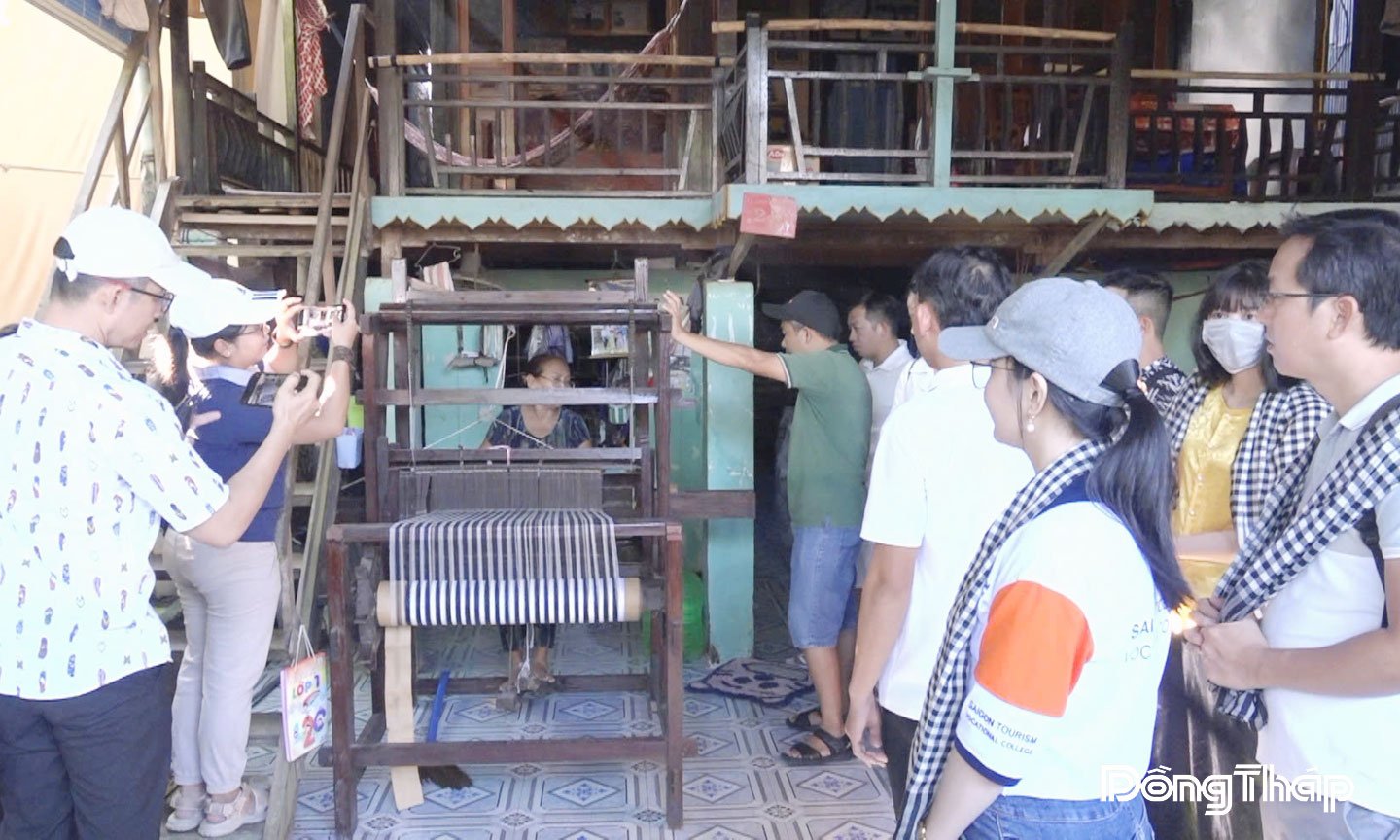





![[Photo] Da Nang: Hundreds of people join hands to clean up a vital tourist route after storm No. 13](https://vphoto.vietnam.vn/thumb/1200x675/vietnam/resource/IMAGE/2025/11/07/1762491638903_image-3-1353-jpg.webp)

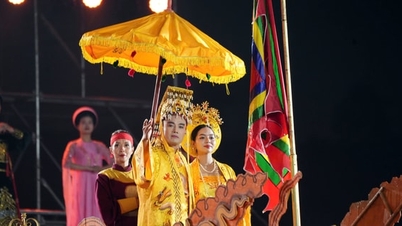


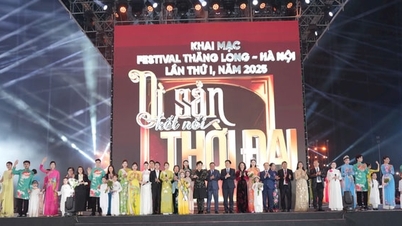
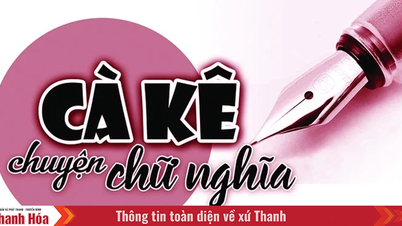









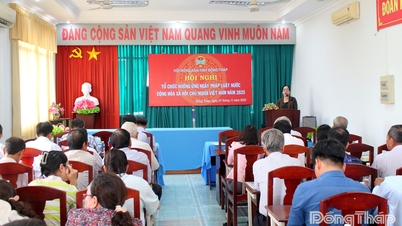
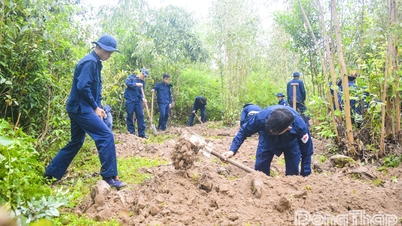


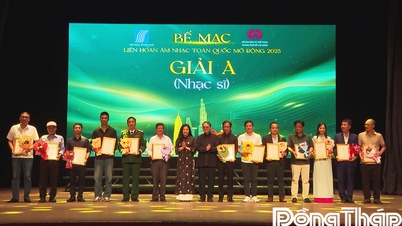











































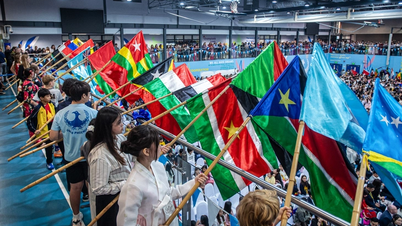

































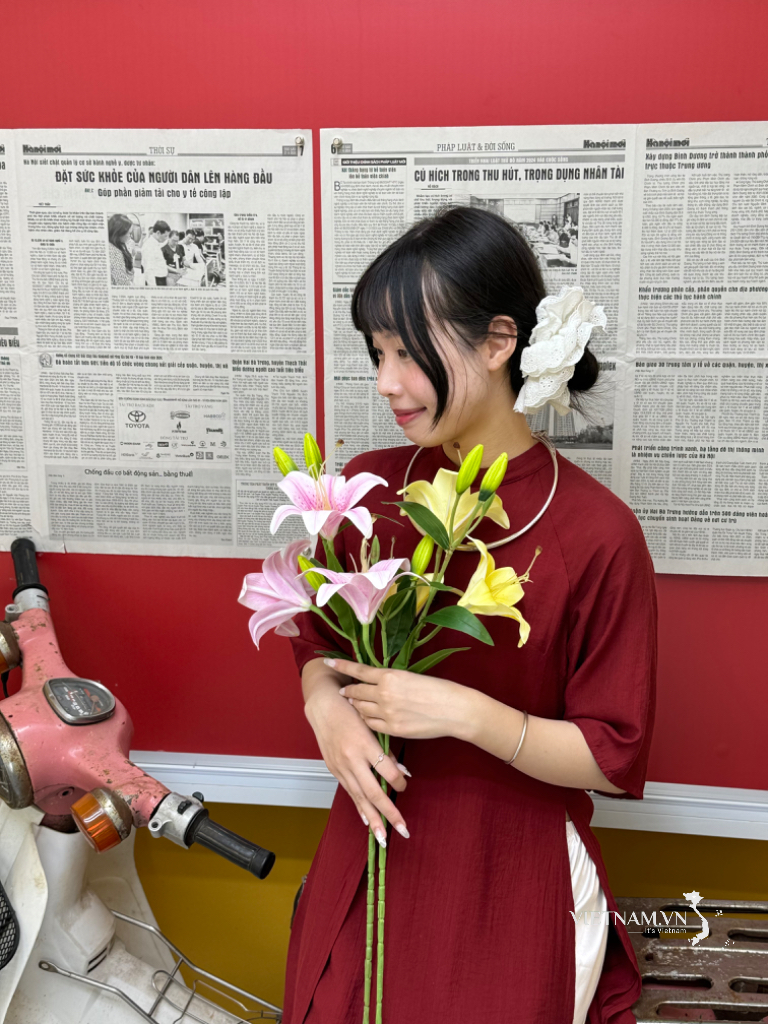
Comment (0)